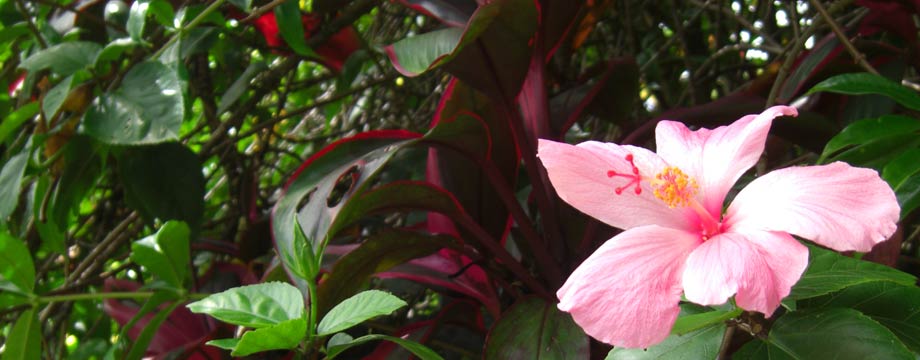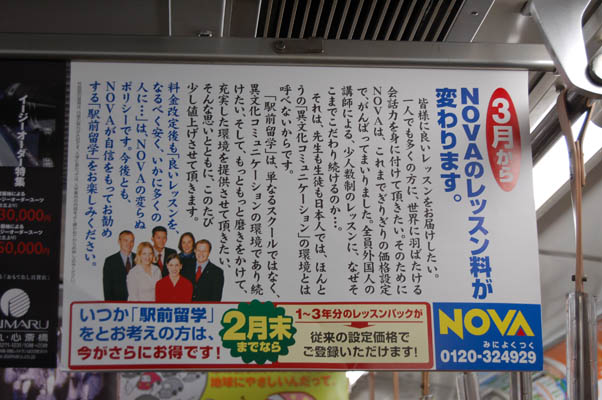
The gist of this advertisement is that Nova is going to raise their prices and ostensibly their level of service as well. We all know this is BS. I have met some pretty cool people that have worked at all of the main eikaiwa companies in Japan including Nova, but Nova seems to attract a lot of sub-par, loser gaijin while offering second-rate english conversation lessons. Nothing is very likely to change, except for a price hike.
This has to be one of the stupidest advertisements I have ever seen. Who should have to pay more for an already over-priced, inferior service? Unfortunately, it isn’t common knowledge to Japanese people that Nova isn’t one of the better franchises. Marketing does work, but will people really buy this?
To their credit though, Nova is a good for getting you a working visa in Japan, for generating unbelievably funny baka-gaijin stories in bulk, and sometimes for networking. Other than that, it is a company that regularly passes out packets of tissue paper for free at most of the places heavily used by pedestrians in Osaka.
Nova is in trouble
The Magic Keitai
Working with first year primary school students is a lot like being a sheet of tissue paper. The kids seem to enjoy wiping, throwing, spilling or somehow conveying dirt, food, saliva, beverages, and other stuff that would make a petri dish bloom with a thick fuzz ranging the full spectrum of the rainbow.
Today a few kids insisted on licking my sweater, tried to kancho me (swift and merciless revenge was exacted, and the little demon-spawn thought twice before approaching this gaijin with anything other than good intentions), and this one, well, he did something that took me off guard..
During lunch at shogakko, the children push their desks into groups of 4 and each day, they take turns at donning scrubs and masks and serving the school lunch. I am usually shown to a seat, and spend my time playing with them or talking to them about whatever they’re interested in that particular moment.
This kid was asking me some questions when he started digging around his nose and pulled out a choice nugget. Fascinated, he decided to test its viscosity by repeatedly poking it against a chair and stretching it out. It was quite sticky and stretchy, like the cheese that strings off of a freshly baked pizza. After a minute, he decided to roll it around the table, as if kneading a lump of dough.
Then he caught me watching, and I could see the light bulb blink on behind his dark, evil eyes. There was never any doubt of what he planned to do, and we locked eyes like rival samurai in the midst of a battle. He extended his loaded finger, this loathsome bayonet of terror, and charged. As I caught his hand, I pulled out my keitai with my other one and switched on the camera.

“Wow, that’s a great booger, do you mind if I take a picture?”, I asked. His puny 6 year old brain was short-circuited by the sight of a camera and my question, much the same way a magician uses his props to draw attention away from what he doesn?t want people to see, and he forgot about his wicked deed, reprogrammed by the desire to be photographed. The other kids, of course, then screamed to have their pictures taken as well, and I obliged them, grateful to pay this price instead of having some little brat’s booger smeared into my clothing.
So if you teach at elementary or nursery school, remember the camera on your cell phone. Properly used, you can easily change your fate by using it to misdirect the little bastards! Just remember to lock the keys on the phone just in case one of them manages to swipe it from you.
Heads
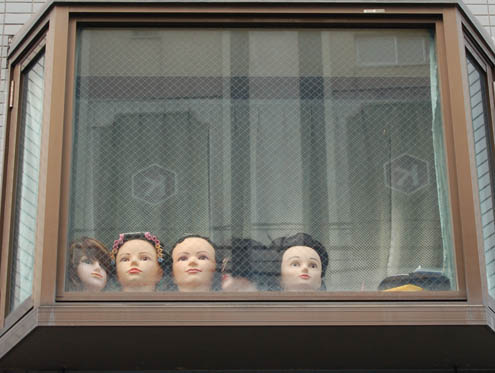
How would you like to open up the curtains and see this from the window of your love hotel? It would serve you right for being such a tight wad and picking that hotel in the first place! This was found, of course, in Juso.
Disney Dystopia
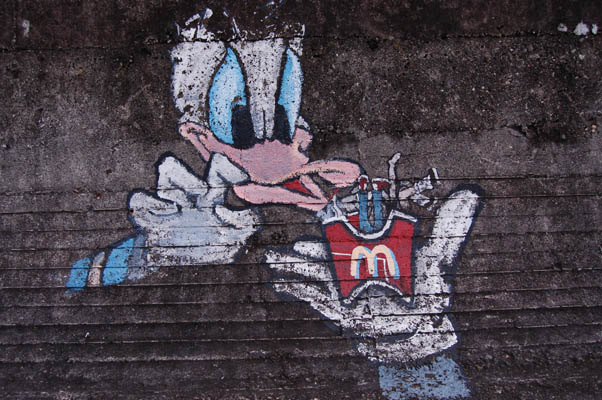
Donald Duck enjoys a little something from McDonalds. Take a careful look at the fries. Another thing to consider: Who is proffering him the fries?
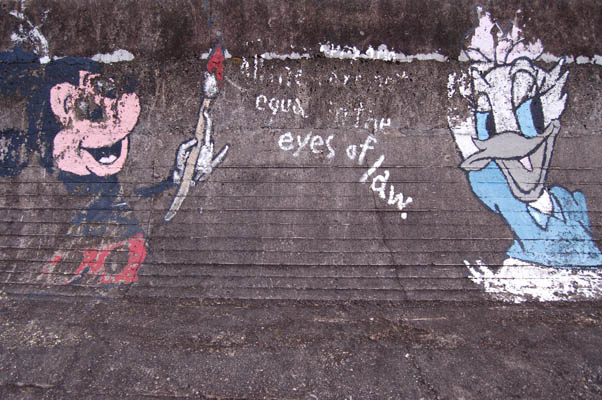
“All men are not equal in the eyes of law.”
Sounds like something that Hammurabi would say.
These Disney characters are really starting to creep me out.
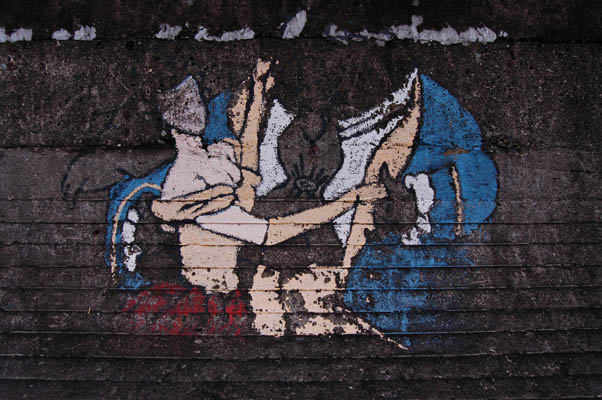
Beauty’s face is missing and the Beast has gone invisible.
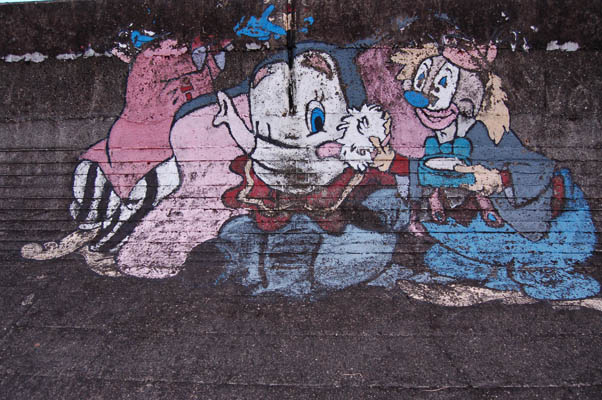
Dumbo wears as much makeup as some of my students and, sadly, this is hardly exaggeration.
…On second thought, go on without me
Surprisingly, this place isn’t in Juso.
Hadaka boy gets pegged
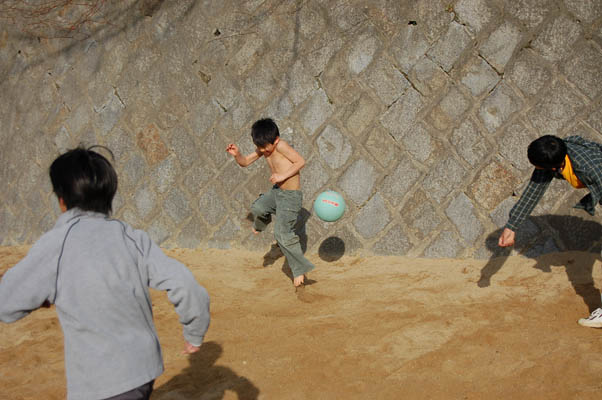
This kid was playing dodgeball shirtless on a day that was cold enough to snow. He insisted that “hadaka power” gave him special powers. Ah, I’m going to miss the dodgeball.
The Cosmic Buddha Thong: Get Yours Today!

(link)
Dude, Justin, I don’t remember you mentioning this on your site.
And the design, you could have done better than a yellow-snowman. Or is it supposed to be dog poo?
Kusai! Kitanai! Kakkowarui! Meiwaku Tabako!

This sticker expresses my exact sentiments towards tobacco smoke and inconsiderate smokers. Wanna smoke? Hey, that’s your right, but keep it out of my face!
Across the river from Juso
This is the view from the Umeda Sky Building, which overlooks all of Kita, as well as Yodogawa-ku. At a higher resolution, you can see the tents of the homeless that run along the sides of the Yodogawa.

